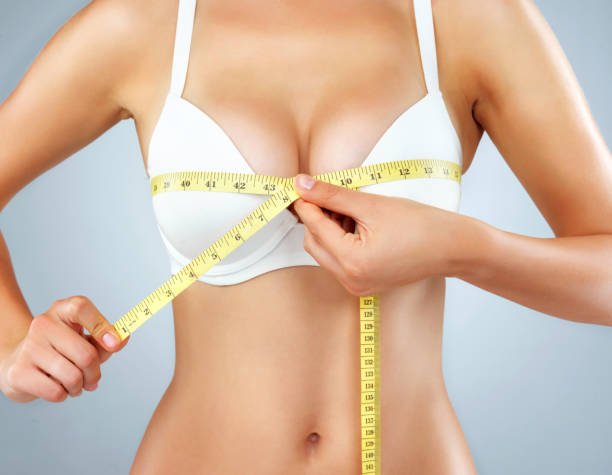
Breast Enhancement with or without Implants

Dr. Millicent Geers
Natural Breast Augmentation in Monument, Colorado Springs, and Castle Rock, Colorado is also known as Breast Augmentation with Fat, Fat Transfer Breast Augmentation, or No-Implant Breast Augmentation.
Natural Breast Augmentation involves taking fat from one area of your body — abdomen, flanks/love handles, back, thighs, and/or arms — and then gently and carefully injecting this fat into your breasts. Meticulous Board Certified Plastic Surgeon, Dr. Millicent Geers, has refined her fat transfer technique over many years resulting in hundreds of happy patients.
Breast enhancement that uses fat instead of implants has many advantages over using implants. However, there are also disadvantages. Continue reading for a concise overview of the pros and cons of different types of Breast Augmentation performed by Dr. Geers in Monument, Colorado Springs, and Castle Rock, Colorado.
Breast Augmentation With Implants
Pros:
- What you see is what you get. The implant volume you select is the volume that will remain. With fat transfer, some of the fat will be reabsorbed before stabilizing at a certain volume and your breast fat volume may also fluctuate with your weight.
- Barring complications such as infection or capsular contracture and/or selecting an unsatisfactory implant volume, breast enhancement with implants requires one initial surgery to achieve your desired breast volume. Natural Breast Augmentation may require more than one fat transfer to achieve your desired volume goal and requires both liposuction and fat transfer.
Cons:
- In some women, breast implants may cause systemic symptoms such as joint pain, brain fog, and fatigue. This is known as Breast Implant Illness (BII) or Autoimmune Syndrome Induced by Adjuvants (ASIA). Implant removal is usually the remedy and may not alleviate all symptoms.
- It is normal and expected for a capsule to form around your breast implants. In rare cases, cancers of this capsule can occur with either smooth or textured implants. Treatment of these cancers is surgery to remove the implants and capsule.
- Implant rupture or deflation can occur. The risk of rupture or deflation increases every year you have your implants. Treatment for rupture or deflated implants is surgery.
- You may experience thickening and tightening of the capsule around the implant. This is called capsular contracture and can lead to breast pain and deformation. Treatment for this condition is additional surgery.
- The FDA recommends either ultrasound or MRI every 5-6 years to detect for silent implant rupture for silicone-filled implants. This is usually not covered by insurance.
- Breast implants can make it harder for the doctor to see the breast tissue on a mammogram, so extra pictures are usually needed. Moving your breast tissue away from the implant to get a better breast x-ray may be more difficult if the implant pocket is above the muscle instead of under the muscle.
- Breast implants are not a lifetime device. You will likely need another surgery in the future for removal, exchange, or other breast surgery.
Natural Breast Augmentation
Pros:
- No need to worry about future implant exchange or removal as fat is natural and unlike implants, last a lifetime.
- No concern about Breast Implant Illness (BII) or or Autoimmune Syndrome Induced by Adjuvant (ASIA).
- No concern about painful capsular contracture.
- No need for ultrasound or MRIs that are usually NOT covered by insurance.
- No need for additional breast surgery for volume unless you are not satisfied with the volume gained by your initial surgery.
- May fluctuate with your weight which means your breast volume may remain proportional to your body.
- No need to worry about future implant exchange or removal as fat is natural and unlike implants, last a lifetime.
Cons:
- Volume will vary. No definitive volume can be determined beforehand. For example, 400 cc of fat can be injected and perhaps 200-280 cc will stick around long term.
- Risk of fat nodules or lumps. These are benign (non-cancerous), but may be anxiety-producing if you are at higher risk for breast cancer and do not like feeling lumps in your breast. Even if you are not at increased risk for breast cancer, feeling breast lumps may be disconcerting.
- Calcifications after breast surgery, including Fat Transfer Breast Augmentation may occur. These will appear on mammogram. Calcifications seen on mammogram can also occur with breast cancer. There is generally a difference in the pattern or distribution of calcifications due to breast cancer versus those due to fat grafting. Radiologists have become more experienced evaluating mammograms after fat transfer procedures and can usually distinguish between concerning versus non-concerning calcifications. In some cases, however, additional imaging studies, such as an MRI, or a biopsy may be necessary to make a distinction.
With either type of breast enhancement, you should:
- Continue your monthly self-breast exams.
- Continue your regular breast clinical exams with your doctor.
- Continue your regular breast screening regimen with either mammogram and/or MRI.
- Know that both approaches can affect the results of mammography.
Schedule a Consult
If you would like breast enhancement, but are unsure of which surgery is best for you, call 719-633-5255 to make an appointment for an in-depth, tailored-for-you consultation with Board Certified Plastic Surgeon, Dr. Millicent Geers.




